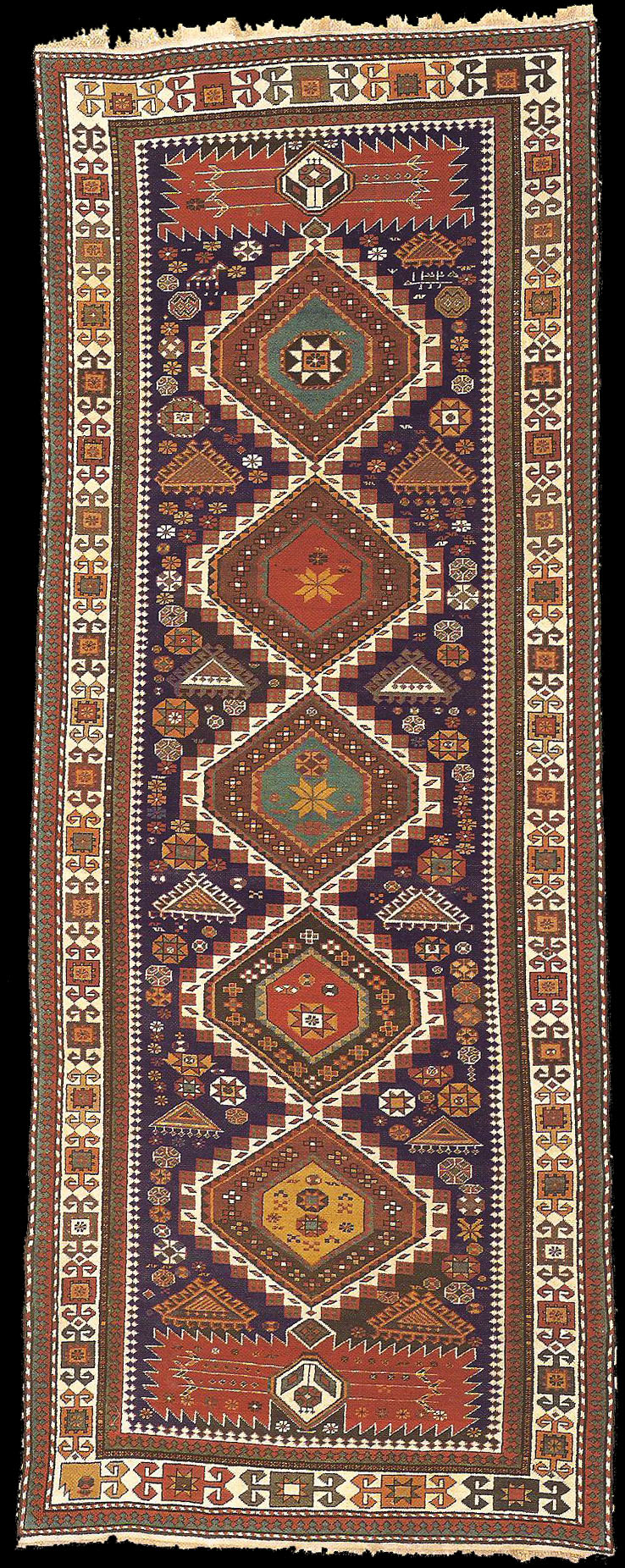|
Arjiman
Shemakha district, Shirvan
309 x 119 cm
Dated: 1325 - 1907
Five concentric, stepped hexagonal medallions descend the vertical axis of
the midnight-blue field. At the upper and lower ends, palmette projections
called kubpa or bashlyk appear, which are further transformed into red,
flame-like forms. It is precisely this flame-like ornamentation that is
characteristic of Arjiman. L. Kerimov reports that the fire-worshipper
(Zoroastrian) called kubpa or bashlyk "faruhar", and that this was one of
the main symbols of their religion. According to this religion - and
Azerbaijan was one of the main centres of fire-temples - the human soul
finds eternal rest in heaven after the body's death. Only on the 1st, 3rd,
7th and 40th day and on the anniversary of death does the soul descend to
earth, to its former habitation.
The light-ground main border is a simple row of multi-coloured squares with
end-hooks in pairs. One and/or two minor borders with reciprocal crenels (madakhil)
complete the border system.
Warps: Wool, Z3 S, ivory and beige.
Wefts: Cotton, Z2, white, 2 wefts: 1st somewhat tight, 2nd waved.
Pile: Wool, Z2; camel hair, Z2,
Pile Height: 5.5 mm.
Knots: Symmetrical 2, / , 45 °, H 40xV30 = c. 1,200 Kn/dm2.
Handle: Velours, almost thin, lightly ribbed.
Upper End: c. 1 cm cotton simple tapestry weave, fringes in groups knotted
in staggered rows (remainder).
Lower End: c. 15 cm white cotton simple tapestry weave, uncut fringes looped
in pairs, a few spots knotted in groups (probably added later).
Selvedge: 0.6 cm white cotton shirazi around 2 ribs in figure-of-eight
wrapping with supplemental threads.
Remarks: The quality and colours are both good. Technically, the carpet
shows a strong similarity with the Salyan ("Akstafa"). The main border is
almost identical in terms of ornamentation. Literature: L. Kerimov IV,
colour ill. 60.
published at Siyawouch
Azadi "Azerbaijani Caucasian
rugs" plate no: 78
 |

